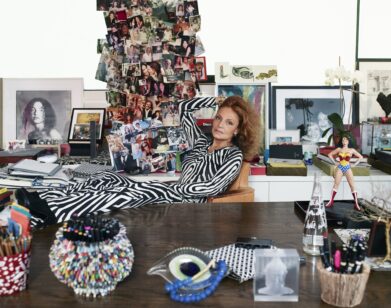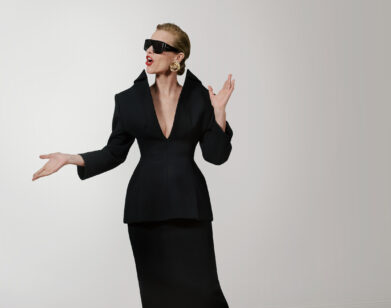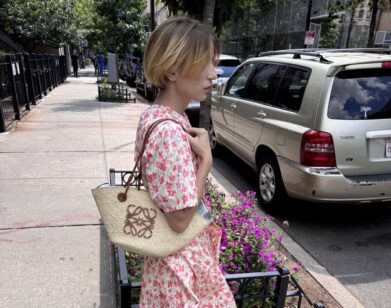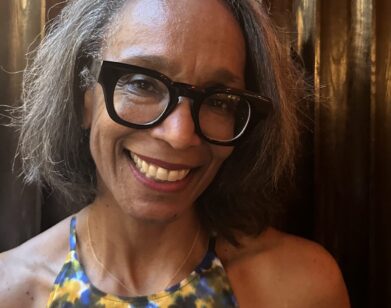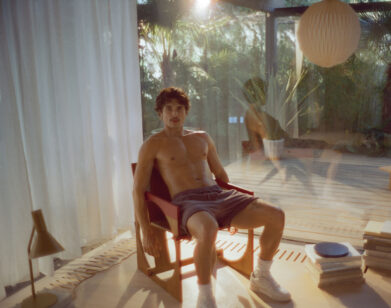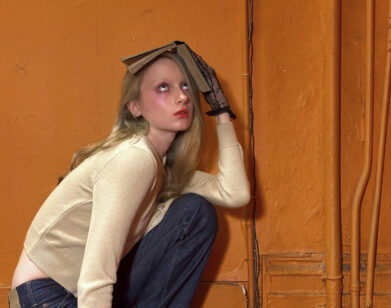Vaquera Takes Us Down the Yellow Brick Road with a Karaoke Send-Up of the Wizard of Oz
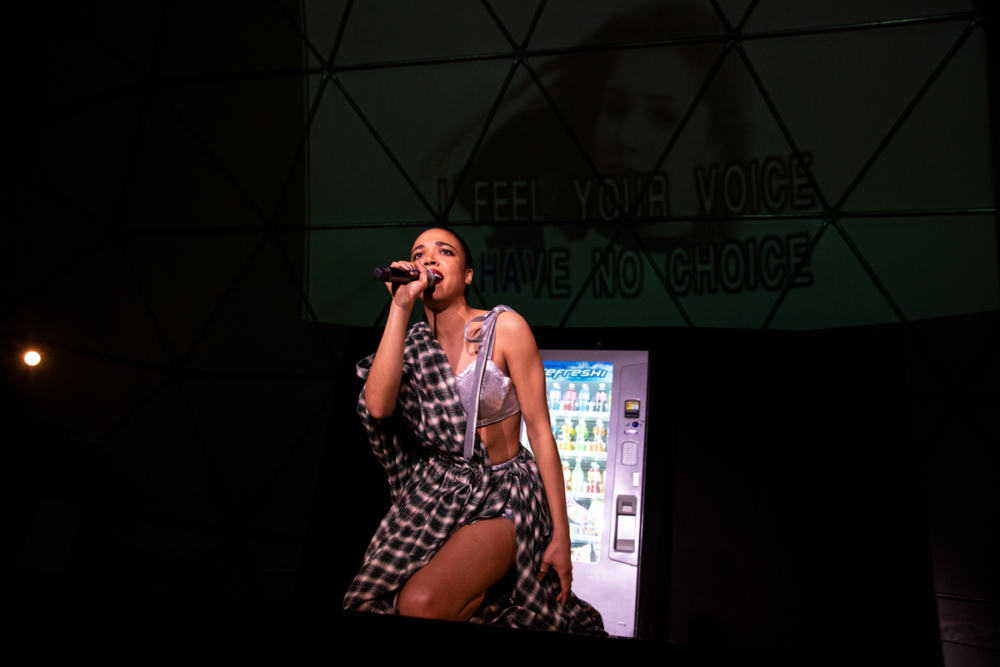
Zsela as Dorothy in Vaqueraoke: A Return to Oz.
There has always been an inherent creepiness to the Wizard of Oz, that technicolor acid trip brimming with cackling witches, pointy shoes, flying monkeys, and aching nostalgia. But what happens when this ever-so-crooked coming-of-age tale is remixed into a campy musical art performance directed by one of New York’s more genre-bending fashion houses? The result is Vaqueraoke: A Return to Oz, staged, as the title playfully suggests, by Vaquera. As the most recent installment of MoMA PS1’s Sunday Sessions, the performance was a soup of postmodern irony, buckets of glitter, and a timeless tale of innocence lost. The show was staged as a series of karaoke performances, each sung loudly, and erratically, by a cast of characters loosely inspired by the film. There was a screechy rendition of “Smells Like Teen Spirit” by “the Ruby Slippers,” a leather-clad duo in oversized glittery red pumps, followed by an inflatable guitar-assisted performance of “Ballroom Blitz” by a pussy-bow clad Lion and a Tin Man with flared pants. A character by the name of “Crystal Ball,” clad in an iridescent ruffle gown, wailed “All By Myself” with a whiskey-stained malaise more fitting of a barfly. And in a standout moment, an intergalactic Dorothy, with braids done up in silver bow ties, bellowed out a sparse rendition of Madonna’s “Like A Prayer,” her asymmetrical plaid gown revealing one half of a silver coned bra in a nod to the Queen of Pop.
No moment throughout the show better encapsulated the schism between the color-filled fantasia of Oz and the desperate longing for a bygone black-and-white existence than the ballad of Dorothy, who was played by Zsela, the sister of actress Tessa Thompson. With a longing gaze and a strong reverb, Thompson added a powerful depth to Dorothy’s girlish naiveté. In the program we were handed (a riff on a Broadway playbill), the description of Dorothy detailed how Judy Garland was put on Barbiturates during the filming of Oz in order to maintain the character’s childlike figure. The decision infamously launched Garland into a lifelong battle with drugs, which ultimately lead to her death. “When she’s lying in the field of poppies and it starts to snow,” the playbill reads, “the snow is in fact asbestos.” It was, perhaps, the best example of Vaquera’s easy demolition of a cherished cultural monument, brick by yellow brick. Ahead of the performance, Interview sat down with label’s trio of designers — Patric DiCaprio, Claire Sully, and Bryn Taubensee — to talk all things about the legendary, and at times disturbing, film — from the “orgasmic” moment Dorothy enters Oz to the strange specificity of Toto’s fur.
———
SARAH NECHAMKIN: How’s it going?
PATRIC DICAPRIO: Just sewing away.
NECHAMKIN: How did the idea to do a Wizard of Oz-themed karaoke performance come about?
DICAPRIO: Our main question is: Why do people like The Wizard of Oz? It’s weird. And why is Wicked the number one Broadway play? Why has there been this fascination with these characters? Is it what they’re wearing? Was it the actress that played the character? What happens if you change all of that?
CLAIRE SULLY: We’re interested in reimagining the looks not as just a literal Dorothy dress. We’re thinking of a less innocent Dorothy, personifying the ruby slippers. Asking more questions than giving answers is our style. Is Dorothy a witch, too? There’s a line in the movie: “Are you a good witch or a bad witch?” She’s like, “I’m not a witch at all.” I think it’s interesting to think about her power in that scenario, coming into Oz and causing a stir. It’s just one example of the ways that we’re turning things on their heads here.
NECHAMKIN: What’s your relationship to The Wizard of Oz as a cultural phenomenon?
DICAPRIO: We’ve called our work fashion “fan fiction,” before. We examine why people are obsessed with things. I think all of us like The Wizard of Oz and have had experiences with it, but it’s more about other people’s experiences and questioning that.
BRYN TAUBENSEE: It’s not like we love Wicked. I haven’t even seen Wicked.
SULLY: I did go to Wicked a lot as a kid. My family was very Broadway-obsessed, and I remember my sister, in particular, was very obsessed with Wicked and Elphaba as a character. As an adolescent, I was exposed to this hyper-theatrical world that I found interesting, but it was always more fascinating to me how obsessed my sister was with the show.
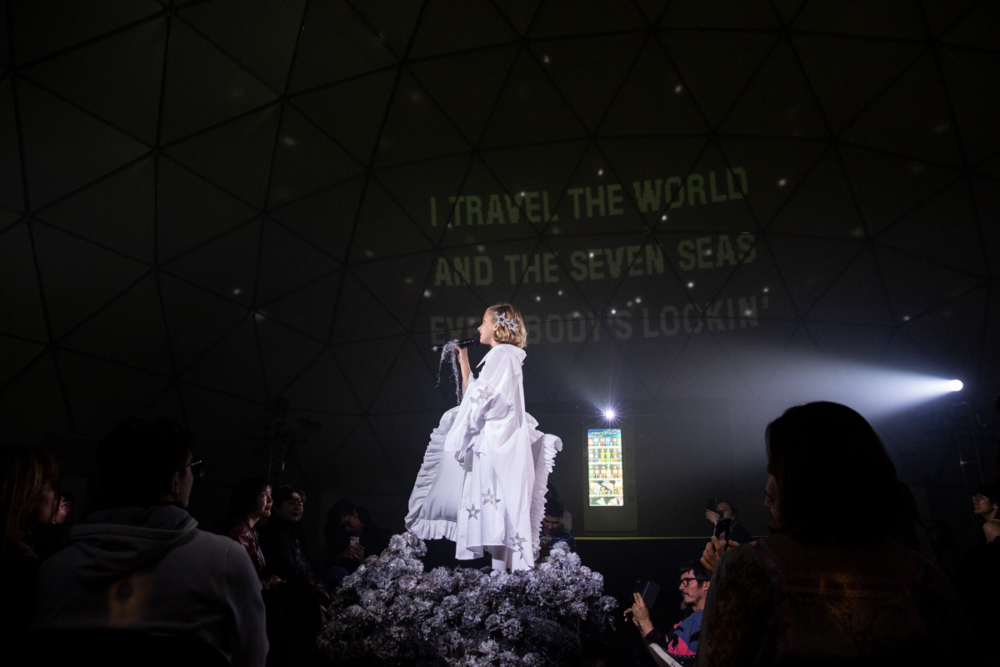
Siena Lopez Wyman as Glinda’s Wand.
NECHAMKIN: I used to be deathly afraid of Wizard of Oz as a kid.
SULLY: Really?
TAUBENSEE: It’s very intense. I watched it again recently before we were doing this project, and I was really impressed by it, still.
DICAPRIO: Think about the idea of people having never seen a color film and then going into this color movie: The Emerald City, the ruby slippers, the yellow brick road. There’s this iconic switch in the beginning, where she walks out into Oz, and it goes from black and white to color. Think about how orgasmic that is! What people must have thought. How can you talk about that moment? When we were choosing our fabrics and picking which characters were gonna be dressed in, we were like, Is this character in black and white? What if the ruby slippers weren’t red?
NECHAMKIN: How does the concept of karaoke fuse with the Wizard of Oz iconography?
SULLY: Karaoke plays into fandom. You get on stage, and you’re performing as kind of a fan of the song that you’re singing, and you get into this new character.
DICAPRIO: We were just in Japan recently, and our friends there took us out to karaoke. We were all so inspired that mode of expression. The way you can share this side of yourself that you couldn’t in normal conversation or even with clothing. For instance, one of our friends is super meek and barely said anything the entire trip. Then, she started singing this Slipknot song and we were all just like, Wow.
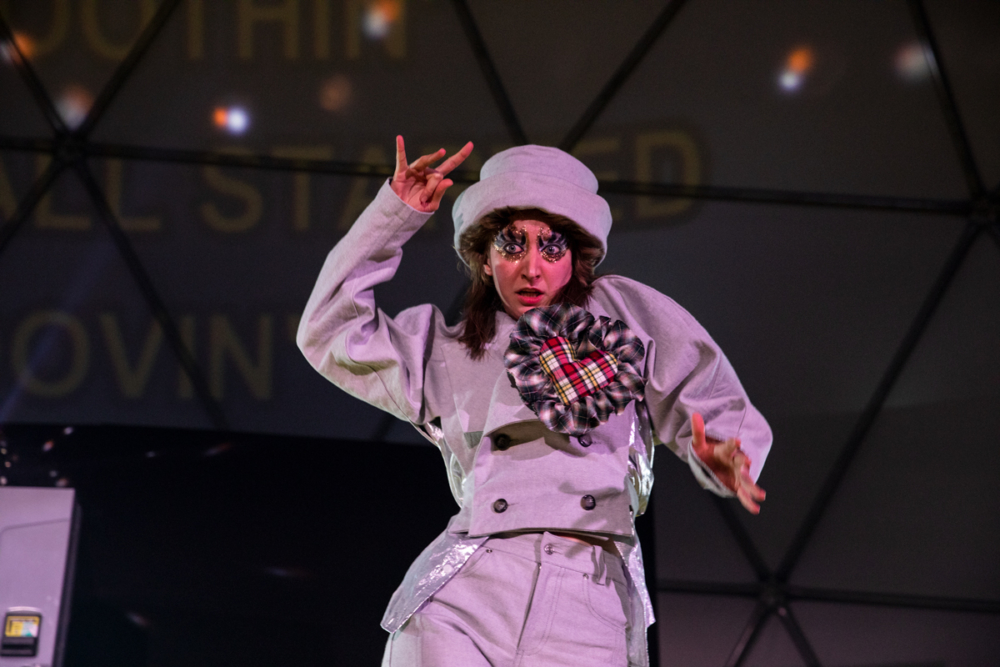
Emily Allan as the Tin Man.
NECHAMKIN: What is it about the individual characters that stand out to you?
SULLY: The idea of desire. The Lion, the Tin Man, and the Scarecrow are all desiring something that they don’t have. Dorothy desires to go back to Kansas. Toto’s fur seems very specific.
DICAPRIO: Nostalgia is obviously popular now, and it always has been popular. Dorothy is an emblem of nostalgia. She’s in this amazing colorful world and has got these new friends that she can actually relate to, and yet she’s still looking back to her past and this seemingly banal life of the farm. But, why? I think we can all see ourselves in Dorothy, as people who have moved to New York and love New York, but are also like, it’s not the ideal place to live or work. I don’t think any of us want to use our red ruby slippers to go back to live with our parents, but I think that that comfort for the past and knowing that you have a secure base is really important.
NECHAMKIN: Do you think that’s part of what’s responsible for the resurgence of the prairie trend in fashion?
DICAPRIO: I think it’s people saying, “Oh, Donald Trump is president. I’m freaked out. It’s hard for me to look into the future and see a happy place for myself, so let’s look to the past, to simpler times and simpler places. And what if I was just a girl on the farm? Is that endearing? Is that a place where I could be happier or something?”
SULLY: Even if it’s probably untrue, I think that people like to look back when they’re facing something difficult. And things always seem kind of better from far away.
DICAPRIO: There was this trick of perceiving a pair of glittery shoes differently because in the movie they have this power. That maybe they have that same power in real life, to make you feel connected to home, or to feel invincible that you can go into a job interview. That placebo effect is a real thing with fashion. Maybe, it isn’t even a placebo effect. It’s why we’re not the type of people who will plan out a whole collection, make the mood board and just be like, Okay, sew it. We make each piece and each character one by one. We work on impulse. It’s just a self-discovery journey every time we go down the yellow brick road.

